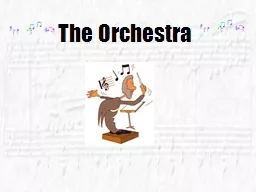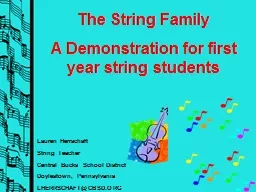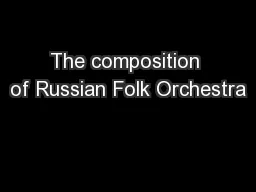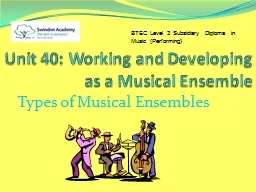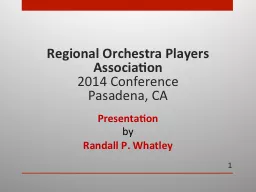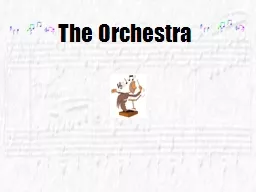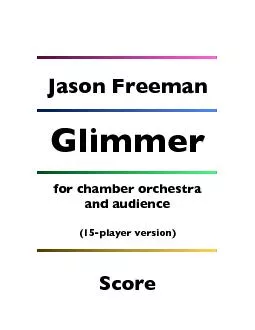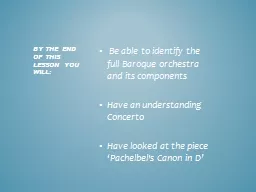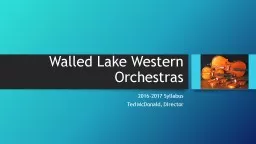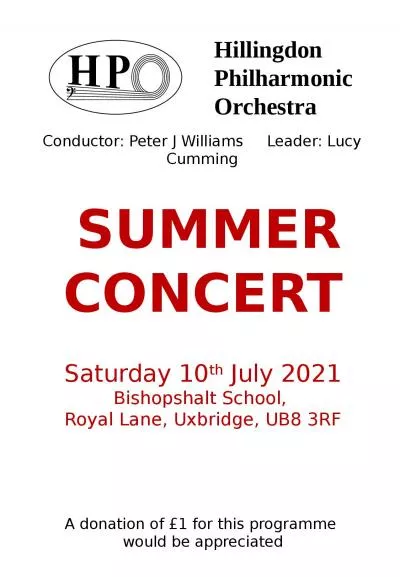PPT-The Orchestra What is an orchestra?
Author : desiron | Published Date : 2020-08-27
The orchestra is made of four families of instruments Strings Brass Woodwinds Percussion The string section has been a major part of the orchestra for 200 years
Presentation Embed Code
Download Presentation
Download Presentation The PPT/PDF document "The Orchestra What is an orchestra?" is the property of its rightful owner. Permission is granted to download and print the materials on this website for personal, non-commercial use only, and to display it on your personal computer provided you do not modify the materials and that you retain all copyright notices contained in the materials. By downloading content from our website, you accept the terms of this agreement.
The Orchestra What is an orchestra?: Transcript
Download Rules Of Document
"The Orchestra What is an orchestra?"The content belongs to its owner. You may download and print it for personal use, without modification, and keep all copyright notices. By downloading, you agree to these terms.
Related Documents

